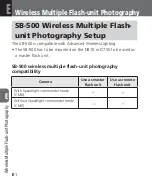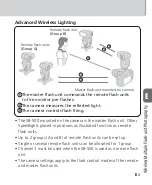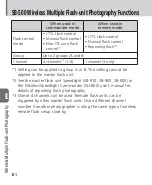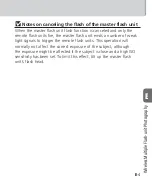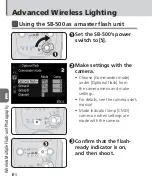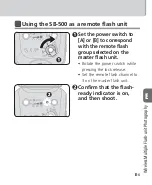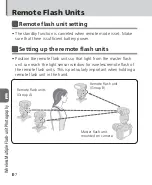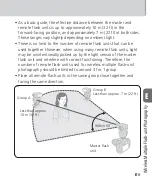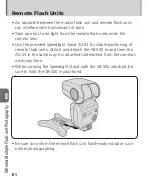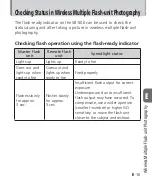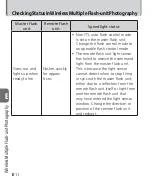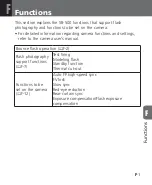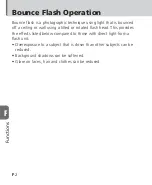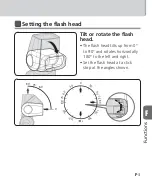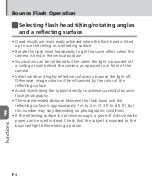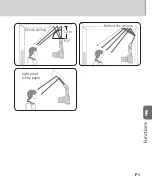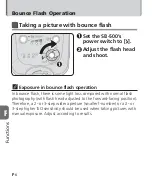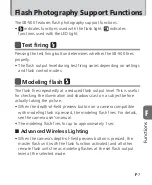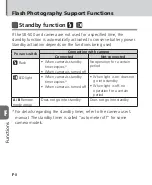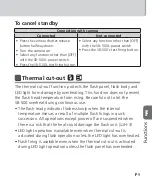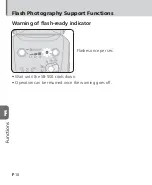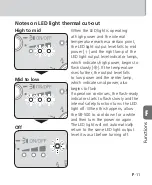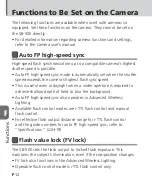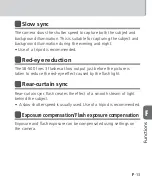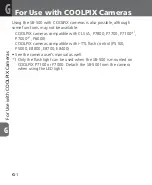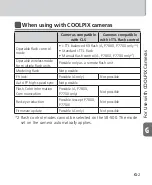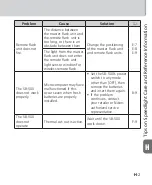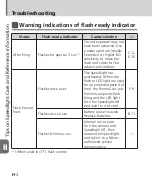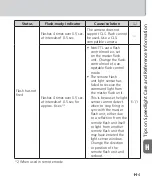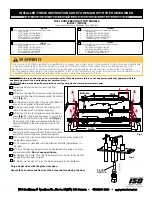
F
-
4
F
Functions
Bounce Flash Operation
Selecting flash head tilting/rotating angles
and a reflecting surface
• Good results are most easily achieved when the flash head is tilted
up to use the ceiling as a reflecting surface.
• Rotate the flash head horizontally to get the same effect when the
camera is held in the vertical position.
• Illumination can be softened further when the light is bounced off
a ceiling or wall behind the camera, as opposed to in front of the
camera.
• Select white and highly reflective surfaces to bounce the light off.
Otherwise, image colors will be influenced by the color of the
reflecting surface.
• Avoid illuminating the subject directly to achieve successful bounce
flash photography.
• The recommended distance between the flash head and the
reflecting surface is approximately 1 m to 2 m (3.3 ft to 6.5 ft), but
this number may vary depending on photographic conditions.
• If the reflecting surface is not close enough, a piece of A4-size white
paper can be used instead. Check that the subject is exposed to the
bounced light before taking a picture.
Summary of Contents for SB-500
Page 20: ...B 1 B Operation Operation B 8 4 3 1 2 7 5 6 SPEEDLIG HT SB 500 Speedlight Parts ...
Page 22: ...B 3 B Operation Speedlight Parts 9 10 12 11 ...
Page 24: ...B 5 B Operation Speedlight Parts 16 17 18 13 14 15 ...
Page 57: ...F 5 F Functions White ceiling 1 2 m 90º Lightproof white paper Behind the camera ...
Page 91: ...H 24 H Tips on Speedlight Care and Reference Information ...
Page 92: ...H 25 H Tips on Speedlight Care and Reference Information ...
Page 93: ...H 26 H Tips on Speedlight Care and Reference Information ...

